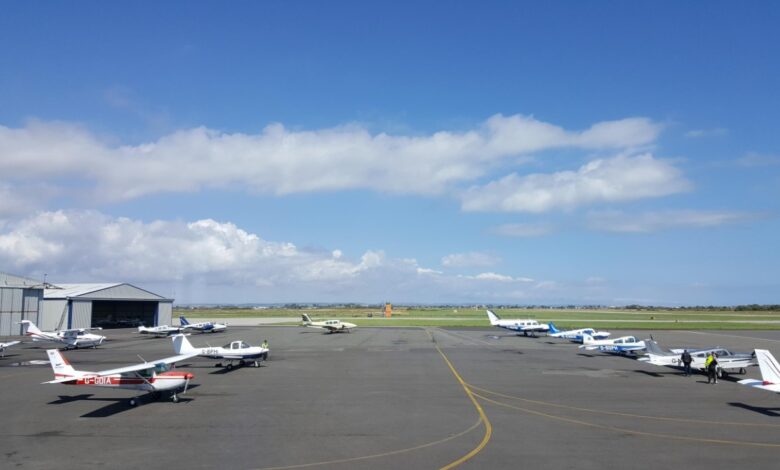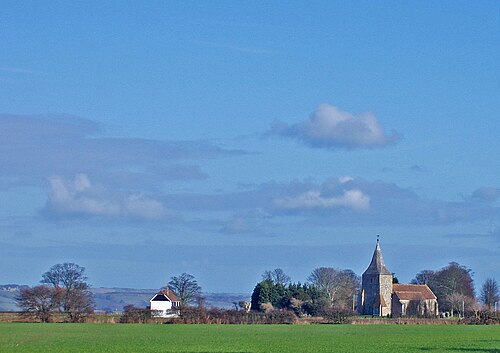Lydd Airport Romney Marsh: Latest Expansion Plans and Development Updates

Lydd Airport Romney Marsh, often known by its alternative name London Ashford Airport, stands quietly amid the scenic expanse of Romney Marsh in Kent. Despite its modest scale compared to major UK airports, it holds significant historical and economic importance for the region. Strategically located just a few miles from the English Channel, Lydd Airport Romney Marsh has served as both a functional airfield and a symbol of regional ambition — connecting the rural southeast with national and international air routes. Over the years, the airport has evolved from a post-war airstrip into a small but vital aviation facility catering to private, charter, and training operations.
The significance of Lydd Airport Romney Marsh lies not only in its operational capabilities but in its ability to balance aviation progress with environmental preservation. Romney Marsh, a unique landscape of wetlands and nature reserves, demands that development respect ecological boundaries. The airport, therefore, stands at the intersection of modernization and sustainability — a theme that continues to define its story. This article explores the journey of Lydd Airport from its historical roots to its present-day operations, delving into its infrastructure, economic role, environmental debates, and future prospects. For anyone interested in regional development or British aviation history, understanding Lydd Airport offers an insightful look into how smaller airports continue to shape local economies and communities.
Historical Background of Lydd Airport Romney Marsh
Early Years and Establishment
The origins of Lydd Airport Romney Marsh trace back to the years following World War II, a time when Britain’s aviation industry was expanding rapidly. The airfield was established to serve both civil and commercial purposes, offering a convenient link between Kent and the rest of the country. In its early decades, Lydd became a hub for private pilots and short-distance flights, serving nearby European destinations. The flat terrain of Romney Marsh made it an ideal location for an airfield, providing natural advantages for runway construction and flight safety.
Wartime and Post-War Significance
Although the airport itself was a post-war creation, the surrounding Romney Marsh area had already played a significant role during the war. The flatlands were used for military operations, radar stations, and defensive infrastructure protecting the south coast. Lydd Airport Romney Marsh inherited much of this strategic value, offering a base for civil aviation while maintaining proximity to key maritime and logistical routes. Over time, the airport developed a niche as a regional aviation hub — smaller than Gatwick or Heathrow, yet crucial for local connectivity and tourism.
Ownership and Evolution
Through the late 20th century, Lydd Airport Romney Marsh underwent several ownership and branding changes, including the well-known rebranding to London Ashford Airport to highlight its proximity to the capital. Investments flowed into runway maintenance, hangar facilities, and terminal improvements, positioning the airport for gradual modernization. Despite occasional challenges — such as regulatory hurdles and environmental opposition — Lydd maintained steady operations. Today, it remains one of Kent’s most enduring aviation landmarks, embodying a legacy of adaptability and community relevance.
Infrastructure, Facilities, and Services
Runways and Terminal Facilities
Lydd Airport Romney Marsh infrastructure is straightforward yet functional. It features a 1,500-meter asphalt runway, suitable for smaller commercial jets, private aircraft, and flight training operations. The terminal building, while compact, provides essential passenger amenities including check-in counters, waiting areas, and on-site parking. Over the years, several upgrades have improved both efficiency and safety, allowing the airport to maintain compliance with UK Civil Aviation Authority standards. The ongoing runway extension proposal, intended to accommodate medium-sized aircraft, remains one of the most discussed topics in local aviation circles.
Flight Operations and Destinations
The airport primarily serves private flights, air taxi services, and pilot training programs, with occasional charter operations to nearby European destinations. Its proximity to the Channel makes it a popular departure point for short-haul leisure and business trips. Aviation enthusiasts frequently visit for sightseeing flights over the Kent coast and the English Channel, while flying schools benefit from the airport’s low-traffic environment. These smaller-scale but consistent operations underline Lydd’s role as a specialized and adaptable regional airport.
Safety, Regulations, and Modernization
Safety is a cornerstone of Lydd Airport Romney Marsh identity. All operations comply with rigorous aviation standards, supported by modern air traffic control technology and updated navigation systems. The airport’s modernization efforts have included sustainability measures such as fuel efficiency programs and soundproofing improvements to minimize environmental impact. These initiatives not only align with current regulatory expectations but also reinforce the airport’s reputation for operational reliability and community responsibility.
Economic and Environmental Impact on Romney Marsh

Boosting Local Economy and Employment
Lydd Airport Romney Marsh plays a vital role in supporting the Romney Marsh economy, directly employing aviation professionals, engineers, and administrative staff. Indirectly, it stimulates local businesses such as hotels, restaurants, and transport services catering to airport visitors and crew. Its contribution to tourism is significant, as the airport provides easier access to Kent’s coastal attractions like Dungeness, Camber Sands, and Rye. As the region continues to market itself as a gateway to natural and cultural experiences, Lydd Airport Romney Marsh stands as a key enabler of sustainable economic growth.
Environmental Concerns and Conservation Efforts
However, the airport’s development has not been without controversy. Located within a sensitive ecological zone, any expansion faces scrutiny from conservation groups concerned about the impact on local wildlife and wetlands. The Romney Marsh Nature Reserve, home to rare bird species and unique habitats, lies near the flight path, intensifying environmental debates. In response, Lydd Airport Romney Marsh has implemented several green initiatives, such as noise reduction programs, biodiversity monitoring, and responsible waste management. Balancing aviation needs with ecological preservation remains central to its long-term vision.
Balancing Growth and Sustainability
The challenge for Lydd Airport Romney Marsh is to sustain economic momentum without compromising its environmental commitments. Regular public consultations and environmental assessments ensure that residents and advocacy groups have a voice in development plans. This open dialogue has helped the airport refine its sustainability strategies, demonstrating that regional growth can coexist with ecological responsibility. Such balance makes Lydd a model case study for other small airports navigating similar challenges.
Connectivity and Future Prospects
Regional Accessibility
Strategically located near Ashford, Folkestone, and Hastings, Lydd Airport offers convenient road access through the A259 and nearby train links via Ashford International. These connections make it an appealing option for travelers seeking alternatives to congested major airports. With improved infrastructure, Lydd could strengthen its role as a regional connector for Southeast England, particularly for private charters and niche tourism.
Expansion Plans and Government Approvals
Over the years, expansion plans have sparked both excitement and resistance. Proposals for extending the runway and upgrading terminal facilities aim to attract small commercial airlines and boost capacity. Government approvals have been gradual, reflecting a careful balance between economic potential and environmental caution. If realized, these upgrades could transform Lydd Airport into a more competitive regional hub while maintaining its intimate, community-centered character.
Vision for the Future
Looking ahead, the airport’s management envisions a sustainable aviation future rooted in innovation and community partnership. This includes exploring electric aircraft technology, enhanced passenger services, and stronger integration with Kent’s tourism and logistics networks. The vision is clear: to preserve Lydd’s historic charm while propelling it toward a greener, more connected aviation era.
Conclusion
Lydd Airport Romney Marsh represents a rare blend of heritage, community, and ambition. From its post-war beginnings to its current role as a niche aviation center, the airport’s evolution mirrors the resilience of the region it serves. Its future will depend on maintaining equilibrium — encouraging economic opportunity while safeguarding the delicate ecosystems that define Romney Marsh. For Kent and beyond, Lydd Airport remains a beacon of how thoughtful development and environmental consciousness can coexist, proving that even small airports can play a big role in shaping the future of sustainable travel in the UK.
FAQs About Lydd Airport Romney Marsh
Where is Lydd Airport located?
A: Lydd Airport is situated in Romney Marsh, Kent, around 14 miles south of Ashford and close to the English Channel coast.
Is Lydd Airport the same as London Ashford Airport?
A: Yes, Lydd Airport is officially branded as London Ashford Airport, reflecting its proximity to London and Ashford.
What types of flights operate from Lydd Airport?
A: The airport handles private, charter, and training flights, with occasional passenger services to nearby European destinations.
Are there plans to expand Lydd Airport?
A: Yes, proposals for runway extension and facility upgrades are under review to support larger aircraft and more frequent operations.
How does Lydd Airport balance development and the environment?
A: The airport works with local authorities and conservation groups to implement eco-friendly policies and minimize its environmental footprint.
You May Also Read: Levante Coach




